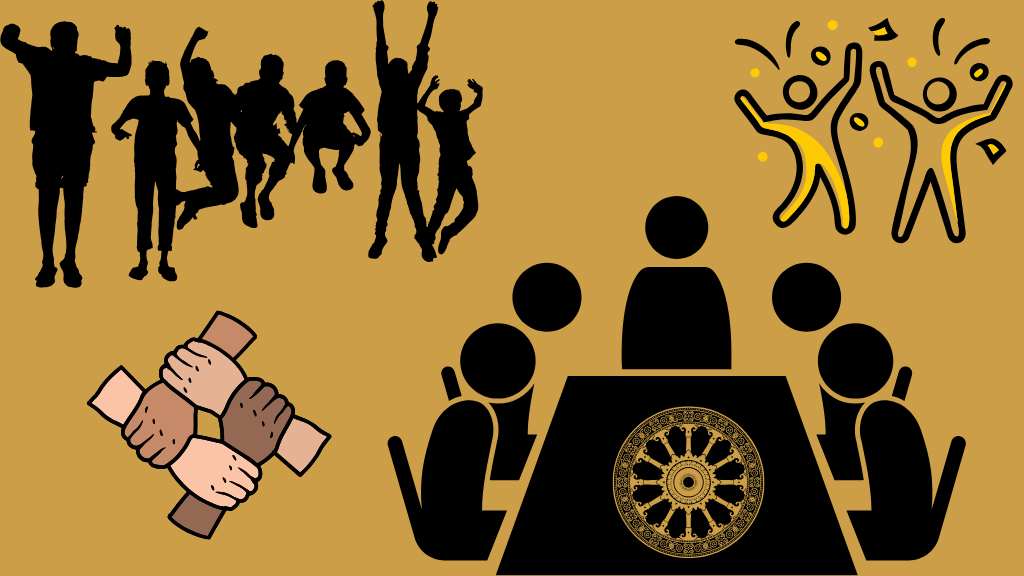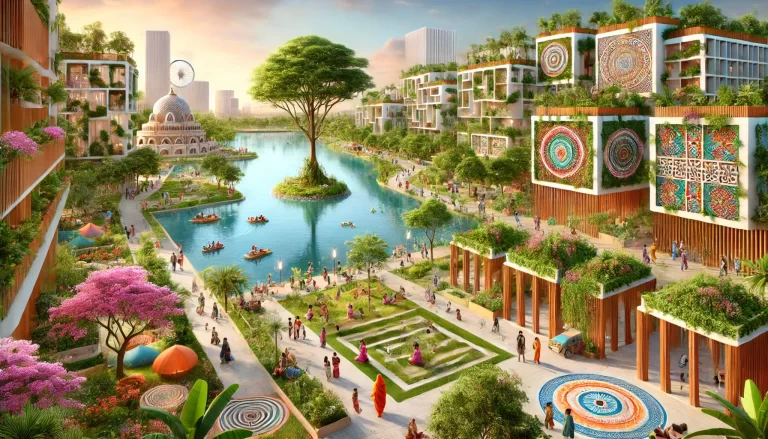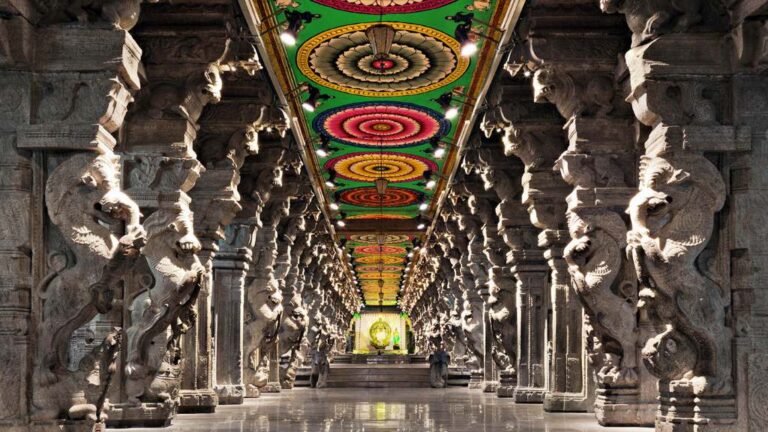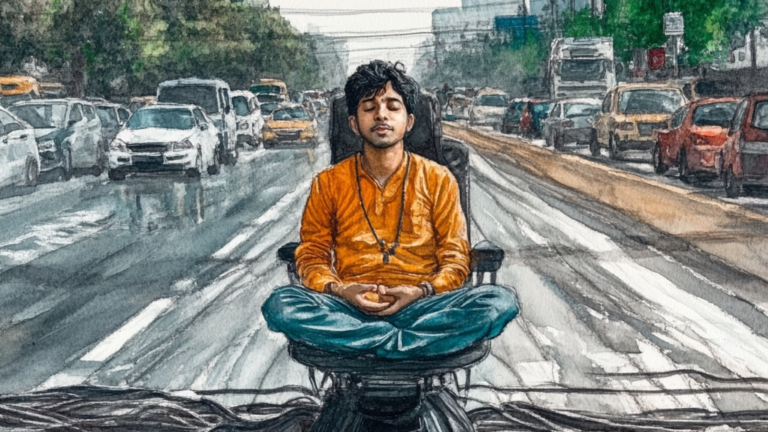Envisioning Dharmic Management
Introduction
My vision of Indic management is one that recognizes and is aligned with the principle and concept of dharma. In Bharata, we have the concept of the of the purusharthas – Dharma, Artha, Kama, and Moksha where Moksha is the ultimate goal but in between there is the pursuit of Artha and Kama but done within the framework of dharma. So, Artha and Kama are valid and supported aspects of this framework but the how is also important. This is a framework that recognizes the relationship between the individual (self), family, society, and larger groups of people and the environment (nature, other forms of life). Similarly, an organization has a self, is part of many different groupings of human beings which intersect at various levels and then you have all the other beings and the environment. Ideally an organization does work that produces a net benefit to the society, industry, country, and the world and does not negatively affect any of the above. And it does this not as an afterthought but as the very core of its reason for existence – its core purpose itself is Loka Sangraha (welfare of the society).
What is Dharma?
धर्मो धारयति प्रजाः। (Dharma dhārayati prajāḥ.)
Meaning: “Dharma sustains the people.”
Mahabharata, Vanaparva (313.117):
धर्मं सूक्ष्मं प्रजानाति। (Dharmaṁ sūkṣmaṁ prajānāti.)
Meaning: “Dharma is subtle and not always obvious.”
Ramayana, Ayodhya Kanda (2.100.38):
सत्यं च धर्मं च पराक्रमं च। (Satyaṁ ca dharmaṁ ca parākramaṁ ca.)
Meaning: “Truth, righteousness, and courage define dharma.”
The Life Divine (Chapter 19): Sri Aurobindo
“Dharma is the truth of action and being which arises from the spiritual law of our nature.”
सत्यं हि परमं धर्मं धर्मं धारयते प्रजाः। (Satyaṁ hi paramaṁ dharmaṁ dharmaṁ dhārayate prajāḥ.)
Meaning: “Truth is the highest Dharma, and Dharma sustains the people.” – from the Mahabharata
सर्वभूतहिते रतः स धर्मं वेत्ति नः पुनः। (Sarvabhūta-hite rataḥ sa dharmaṁ vetti naḥ punaḥ.)
Meaning: “One who is devoted to the welfare of all beings understands Dharma fully.”
यतो धर्मस्ततो जयः। (Yato dharmas tato jayaḥ.)
Meaning: “Where there is Dharma, there is victory.”
तादृशोऽयमनुप्रश्नो यत्र धर्मः सुदुर्लभः । दुष्करः प्रतिसंख्यातुं तत्केनात्र व्यवस्यति ॥(Maha. Shan. Parv. 109.9)
प्रभावार्थाय भूतानां धर्मप्रवचनं कृतम् । यः स्यात्प्रभवसंयुक्तः स धर्म इति निश्चयः ॥ (Maha. Shan. Parv. 109.11)
tādṛśo’yamanupraśno yatra dharmaḥ sudurlabhaḥ | duṣkaraḥ pratisaṃkhyātuṃ tatkenātra vyavasyati || (Maha. Shanti. 109.9)
prabhāvārthāya bhūtānāṃ dharmapravacanaṃ kṛtam | yaḥ syātprabhavasaṃyuktaḥ sa dharma iti niścayaḥ || (Maha. Shanti. 109.11)
Meaning : It is most difficult to define Dharma. Dharma has been explained to be that which helps the upliftment of living beings. Therefore, that which helps ensure the welfare of living beings is surely Dharma. The learned rshis have declared that which sustains is Dharma.
धर्म एव हतो हन्ति धर्मो रक्षति रक्षितः | तस्माध्दर्मो न हन्तव्यो मा नो धर्मो हतोऽवधीत् || (Manu 6.11.15)[14]
dharma eva hato hanti dharmo rakṣati rakṣitaḥ | tasmādhdarmo na hantavyo mā no dharmo hato’vadhīt || (Manu 6.11.15)
Meaning : Dharma protects those who protect it. Those who destroy Dharma, get destroyed. Therefore, Dharma should not be destroyed so that we may not be destroyed as a consequence thereof.
dhāraṇād dharma ityāhurdharmo dhārayate prajāḥ | yat syād dhāraṇasaṃyuktaṃ sa dharma iti niścayaḥ || (Maha. Karna. 69-58)
Meaning : Dharma sustains the society, Dharma maintains the social order, Dharma ensures the well being and progress of humanity, Dharma is surely that which fulfills these objectives
Therefore, Dharma embraces every type of righteous conduct, covering every aspect of life essential for the sustenance and welfare of the individual and society and includes those rules which guide and enable those who believe in a supreme force and higher worlds to attain Moksha.
Introduction: Vision of Indic Management
My vision of Indic management is one that recognizes and is aligned with the concept of dharma. In Bharata, we have the concept of the of the purusharthas – Dharma, Artha, Kama, and Moksha where Moksha is the ultimate goal but in between there is the pursuit of Artha and Kama but done within the framework of dharma. So, Artha and Kama are valid and supported aspects of this framework but the how is also important. This is a framework that recognizes the relationship between the individual (self), family, society, and larger groups of people and the environment (nature, other forms of life). Similarly, an organization has a self, is part of many different groupings of human beings which intersect at various levels and then you have all the other beings and the environment. Ideally an organization does work that produces a net benefit to the society, industry, country, and the world and does not negatively affect any of the above. And it does this not as an afterthought.
The Current Western Paradigm and Its Shortcomings
The current management paradigm in most of the world comes from a western perspective. Knowingly or unknowingly these worldviews have percolated every aspect of our lives. The lives of people have been divided into “work life”, “personal life”, “family life”, “social life” etc and the individual must don a different mask and adhere to vastly different rules, culture and norms in every situation which creates psychological schisms in the individual’s personality. There are a lot of assumptions and subliminal messaging and unwritten codes of conduct, peer expectations and peer pressure, which affect every aspect of life. This whole model is built on the “profit at any cost” mentality and “all is fair in love, war and business” mindset. “Collateral damage” is considered part and parcel of this mode of doing business.
A Broken System of Work-Life Balance
Now, we have a situation where a person goes to work (where he spends most of his life) and lives by throwing himself on the altar of shareholder profitability, suffer bad health, mental distress, and broken relationships to make money. Then he fights for time off to spend that money on repairing the broken physical and mental health, relationships, and an unsatisfactory life in general.
Impact on Society and Environment
This model completely ignores, abandons or is apparently unaware of the ideas of “Moksha” and “Dharma” and is solely focused on the achievement of “Artha” and “Kama” and that too without any bounds, without constraints, without imposition of any duties or consideration of what this determined pursuit of individual Artha and Kama does to the lives of other people, society, culture, countries, environment etc. The only responsibility is apparently to the group of people called “shareholders” of the organization and the entire machinery works only to fulfil the financial goals, requirements, and profitability of these shareholders (their Artha and Kama).
The Financial Focus and Environmental Afterthought
Also, in this model everything is seen from a narrow profit perspective and so even the consideration shown to environment is after the fact and done as an afterthought. The metrics that drive business and the responsibilities to be shouldered by businesses towards environment and society are all developed from the CFO’s office and from and tax saving perspective.
Global Consequences
This acceptable collateral damage model has wreaked havoc on societies around the world and the collateral damage is seen in the rising numbers of chronic diseases and the rapidly deteriorating mental health conditions of vast populations of the planet, especially in the so called “developed countries” of the world. We can see that the western models of problem solving, design, policymaking, sensemaking, tech research, development, healthcare, trade, agriculture, medicine and even approaches to managing mental health have all broken down and are contributing to rising unrest, unhappiness, and general malaise in the world.
The Potential of Bharat’s Ancient Knowledge
It is Bharat that has the ancient knowledge systems that provide the first principle based dharmic frameworks that can guide us in redesigning the business ecosystem such that its foundational precepts, concepts, ideas, processes, systems, policies, services, products and the leaders, managers and employees who run it are aligned with the ideas of ensuring the overall happiness, well-being and holistic growth and development of everyone and everything.
Educational Transformation
Working backwards, to produce such leaders, such thoughts, systems, and paradigms we need to introduce a new type of management education that provides a firm grounding in dharma (that which sustains – nothing to do with religion) and integrates and nourishes all aspects of life.
The New Paradigm: Dharmic Perspective – conscious and compassionate management
We need a new paradigm where all aspects of human endeavor produce happiness, satisfaction, and delight; where we look at the ideas of “employee”, “customer”, “shareholder”, “stakeholder”, “leader”, “boss” etc from a dharmic lens while combining it with the aspects of the western model which are good and are in alignment with dharma.
The Curriculum of the New Management Education
So, the new management education should draw from the depths of Indian Knowledge Systems those ideas, concepts, frameworks, and teaching methodologies that help to produce graduates who not only have the “information” and “functional skills” needed to work in the business ecosystem but also can think from first principles, analyze issues from a dharmic perspective and develop simple, practical and effective solutions that are sustainable from the
get go, maintain harmony and lead to overall health, wealth, happiness and well-being of all (humans and environment) as applicable.
Stakeholder Ecosystem and Ultimate Goals
Any management paradigm affects and deals with the following: The individual and his concept of self, his relationship with other individuals, his relationship with his team, boss, company, family, society, industry, country, and the world. The organization is also an organism which has its own concept of self and its relationship with its internal organisms, teams and with the external environment – society, nature, industry, country, and the world. In doing so, we can define the dharma inspired principles on which the organism should operate and define all its key metrics, stakeholder ecosystem and think in terms its ultimate goals (moksha) – what represents its ultimate non-monetary goal.
Balancing Ancient Wisdom and Modernity
At the same time, we do have a lot to learn from the west as well, especially in terms of how to package and present concept for easy understanding of modern minds. However, this approach often goes too far in simplifying concepts so that the original concept is diluted beyond recognition. We need to strike a balance so that the original concept and its power is not diluted while it’s adopted for modern times.
Faculty Development and Teaching Methodology
To make all this possible we also need to build a solid Faculty Development Program. People tend to teach the way they were taught. Therefore, it is essential that these teachers receive the training in the same way that we want them to teach their students. They need to have a thorough grounding in the new business “sutras” and get a lot of experience in applying the new frameworks to solve important, real-world problems. It would be a good idea to develop a database of real-world problems and use it for testing our frameworks and for teaching. During the Faculty Development Programs and during the actual MBA teaching, the students would be guided to develop their own personal Dinacharya that incorporates the practical aspects of what they learn during their studies. In ancient India, the teacher did not just impart knowledge from outside but worked “on” the student mentoring and guiding him to arrive at the truths or concepts working through the problems from first principles. This experience of learning directly from a teacher stays with the student forever. Learning from our ancient gurukula system, the educational system can be set up such that the student learns 1/4th from the teacher, 1/4th from his peers, 1/4th from self-study and 1/4th from personal experience of life. Such a system should also focus on imparting values and building character and a thorough and systems understanding of the world, industry, society, family, and the individual human being helps to cement that.
Desired Outcomes of the New Management Education / Program
Ultimately, a new IKS based program must produce individuals who:
(1) Have spent sufficient time and effort in learning about themselves and coming to a certain understanding about oneself, and has learned how to regulate himself and his own impulses and behaviours
(2) have developed a sustainable, flexible Dinacharya under the guidance of his teachers and mentors that supports and strengthens her from inside out and helps develop discipline, rigor and will power
(3) have incorporated some type of sadhana into their Dinacharya that helps to stabilize and strengthen them from inside while also detoxifying them on a regular basis such that negative emotions are not accumulated, and the mind is clear and always collected
(4) can approach problem from first principles and can creatively design solutions that are holistic, harmonious and contribute to overall happiness, well-being, and delight of all stakeholders (Chef Vs Cook, Composer Vs Musician)
(5) are aware, conscious of and understands the entire stakeholder ecosystem and the interrelationships between all the stakeholders and the environment
(6) are aware of, conscious of and understands the larger implications and consequences of his own actions and their effects on the various stakeholders
(7) are also aware of, conscious of and understands how to positively impact the entire the whole ecosystem through his actions
(8) have achieved sufficient mastery of the functional skills needed to succeed in business
(9) Think of not only his own or his shareholders well-being but the well-being of all employees, customers, consumers, and the environment as well (all stakeholders)!








Your insights are valuable! Try Sprunki OC Real for a fresh approach to music creation.
Si te gusta los juegos de azar en Espana, has llegado al lugar indicado. En este sitio encontraras resenas actualizadas sobre los plataformas mas seguras disponibles en Espana.
Beneficios de los casinos en Espana
Plataformas seguras para jugar con seguridad garantizada.
Promociones especiales que aumentan tus posibilidades de ganar.
Slots, juegos de mesa y apuestas deportivas con premios atractivos.
Transacciones confiables con multiples metodos de pago, incluyendo tarjetas, PayPal y criptomonedas.
Ranking de los mejores operadores en Espana
En este portal hemos recopilado las resenas mas completas sobre los mejores casinos en linea de Espana. Consulta la informacion aqui:
casinotorero.info
Empieza a jugar en un casino de prestigio y descubre una experiencia de juego unica.
r6qm4j
стоимость продвижения сайта в яндексе в москве [url=www.prodvizhenie-sajtov-v-moskve221.ru/]стоимость продвижения сайта в яндексе в москве[/url] .
Looking to refresh your look with real dreadlocks? Check out our range of dreadlock extensions at this page – real dreadlock extensions, offering the highest quality options for achieving a flawless, natural look.
Expertly hand-crafted with premium natural hair, these dreadlocks are a great match for natural styling. Whether you’re into full-head transformations, we have options that blend with all hair types.
Find your fit with:
– dread natural
– dreads real hair
Make a statement with premium-quality extensions that look and feel real. Discreet packaging available across the USA and beyond!
Transform your look – your dream style awaits.
Want to elevate your vibe with natural-looking dreadlocks? Discover a stunning selection of handmade dreadlocks at this page – dread natural, offering the highest quality options for achieving a flawless, natural look.
Made with 100% human hair, these dreadlocks are a great match for a bold new look. Whether you’re into full-head transformations, we have options that fit all hair types.
Find your fit with:
– dread natural
– dreads real hair
Stand out confidently with premium-quality extensions that look and feel real. Fast shipping available across the USA and beyond!
Start your journey – your new hair era starts here.
https://cr-v.su/forums/index.php?autocom=gallery&req=si&img=4023
Looking to upgrade your hairstyle with natural-looking dreadlocks? Check out the best range of dread natural at the site – dreads real hair, offering the highest quality options for achieving a flawless, natural look.
Expertly hand-crafted with premium natural hair, these dreadlocks are perfect for natural styling. Whether you’re into full-head transformations, we have options that fit all hair types.
Find your fit with:
– human hair dreadlock extensions
– handmade dreadlocks
Achieve that natural dreadlock vibe with premium-quality extensions that look and feel real. Top-rated customer service available across the USA and beyond!
Transform your look – your dream style awaits.
Ищете проверенную помощь в наведении порядка квартиры в Санкт-Петербурге? Наша группа специалистов дает гарантию чистоту и и порядок в вашем доме! Мы применяем только безопасные и эффективные средства, чтобы вы могли наслаждаться свежестью без хлопот. Перемещайтесь к https://klining-uslugi24.ru – Уборка офиса после ремонта Не прозевайте уникальную возможность сделать свою жизнь легче и комфортнее.
Разыскиваете проверенную помощь в уборке квартиры в Санкт-Петербурге? Наша группа специалистов дает гарантию чистоту и и порядок в вашем доме! Мы используем только безопасные и эффективные средства, чтобы вы могли наслаждаться свежестью без хлопот. Заходите Клининг услуги цены
Измучились от скучных уборок и вездесущей пыли? Наша компания в Санкт-Петербурге предлагает первоклассные услуги по уборке как так и деловых помещений. Мы заботимся о вашем времени, используя только безопасные и действенные средства. Наша команда мастеров подарит вашему дому или офису сиянием и порядок, а вам — уверенность и гармонию. Двигайтесь к https://uberu21.ru/ Вверьте наведение порядка нам и наслаждайтесь временем, проведенным с родными и приятелями! Запишитесь на бесплатную консультацию прямо сейчас и получите бонусные предложения для вновь прибывших клиентов. Чистота — это не только работа, это наше призвание!
Разыскиваете проверенную помощь в уборке вашей в Санкт-Петербурге? Наша команда специалистов дает гарантию чистоту и и порядок в вашем доме! Мы применяем только безопасные для здоровья и эффективные средства, чтобы вы могли вкушать свежестью без хлопот. Кликайте Клининг уборка Не прозевайте шанс сделать свою жизнь легче и комфортнее.
Awesome https://shorturl.at/2breu
Дизайнерская мебель для тех, кто ценит красоту и качество.
Мебель премиум-класса [url=http://www.byfurniture.by]http://www.byfurniture.by[/url] .
Very good https://is.gd/N1ikS2
Awesome https://is.gd/N1ikS2
Very good https://is.gd/N1ikS2
Уютная обивка потеряласть? Воскрешение мягкой мебели на дому в СПб! Вернем диванам, креслам и коврам их истинную красоту. Профессиональные средства и знающие свое дело мастера. Скидки первым клиентам! Детали ждут вас! Жмите https://himchistka-divanov-spb24.ru – Химчистка матраса от кошачьей мочи
Very good https://is.gd/N1ikS2
https://mazda-demio.ru/forums/index.php?autocom=gallery&req=si&img=6548
Very good https://is.gd/N1ikS2
Выездная химчистка в жемчужине России и области вокруг! Диваны, ворсистые покрытия, удобные сиденья – вернём чистоту и свежести прямо у вас дома! Набирайте номер! Перемещайтесь к https://himchistka-spb24.ru
Good https://is.gd/N1ikS2
Новые тренды в мире дизайнерской мебели.
Мебель премиум [url=https://byfurniture.by/]Мебель премиум[/url] .